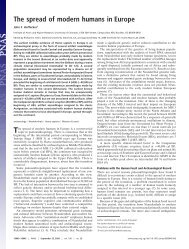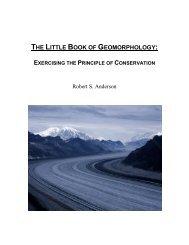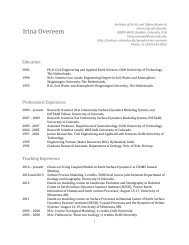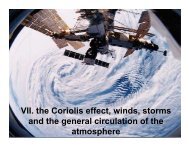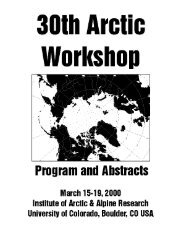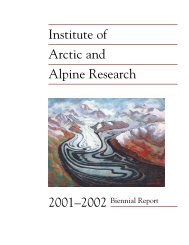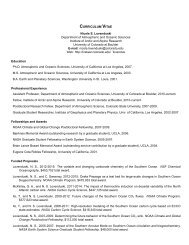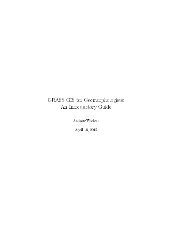Glacier Mass Balance and Regime: Data of Measurements and ...
Glacier Mass Balance and Regime: Data of Measurements and ...
Glacier Mass Balance and Regime: Data of Measurements and ...
Create successful ePaper yourself
Turn your PDF publications into a flip-book with our unique Google optimized e-Paper software.
IntroductionThis work presents data <strong>of</strong> glacier mass-balance from records that have been collected over thehistory <strong>of</strong> mass-balance measurement activity. Until now these data have been spread through manypublications <strong>and</strong> this may explain why glaciological data have not been used as fully as they could be, inmany fields <strong>of</strong> geosciences. <strong>Mass</strong> balance data have not been appropriately organized, i.e. digitized,quality checked, made accessible electronically, <strong>and</strong> compiled as continuous series <strong>of</strong> variables. It hastaken many years to gather, organize, <strong>and</strong> present mass balance <strong>and</strong> related data in this publication. It ishoped that this publication will speed up the process <strong>of</strong> incorporating glaciological data in programs forwhich such information is useful. The goal <strong>of</strong> this publication is less ambitious than that <strong>of</strong> the WGMS(World <strong>Glacier</strong> Monitoring Service), which aims to create <strong>and</strong> make accessible in the complete database<strong>of</strong> all characteristics <strong>of</strong> glaciers, including glacier inventory, mass balance <strong>and</strong> fluctuations (Hoelzle <strong>and</strong>Trindler, 1998), but goes beyond the WGMS mass-balance publications.This paper is oriented to several categories <strong>of</strong> users, including pr<strong>of</strong>essional glaciologists,climatologists, hydrologists <strong>and</strong> other specialists interested in high-mountain <strong>and</strong> polar environments.Other potential users are those interested in the state <strong>of</strong> modern glaciers, their change in a global scale orin any particular region during times <strong>of</strong> climate warming. By placing all data on mass balance <strong>and</strong>related components in one h<strong>and</strong>y source, our colleagues in glaciology, in particular those involved indata collection, will have an opportunity to check previously published data, <strong>and</strong> improve data for thenext publications.<strong>Glacier</strong> mass-balance data have gained an increased attention in detecting global climate change<strong>and</strong> explaining rising sea level (Meier, 1984; Oerlemans <strong>and</strong> Fortuin, 1992; Kuhn, 1993; Dyurgerov <strong>and</strong>Meier, 1997a; Gregory <strong>and</strong> Oerlemans, 1998). <strong>Glacier</strong> mass balance change is important to regionalwater supplies <strong>and</strong> power generation (Bezinge, 1979; Fountain <strong>and</strong> Tangborn, 1985; Bakalov et al.,1990). The importance <strong>of</strong> monitoring glaciers <strong>and</strong> their relation to climate is recognized by the GlobalChange Program (Our Changing Planet, 1996), the Intergovernmental Panel on Climate Change (IPCC,1996, 2001), <strong>and</strong> by the international program <strong>of</strong> glacier monitoring [IAHS (ICSI)-UNEP-UNESCO,1977].Small glaciers (all glaciers other than the two major ice sheets, Greenl<strong>and</strong> <strong>and</strong> Antarctica), havea total area <strong>of</strong> at least 680×10 3 km 2 (Meier <strong>and</strong> Bahr, 1996). Although they make up only 4% <strong>of</strong> the totall<strong>and</strong> ice area, they may have contributed to as much as 30% <strong>of</strong> sea-level change in the 20th century due10



